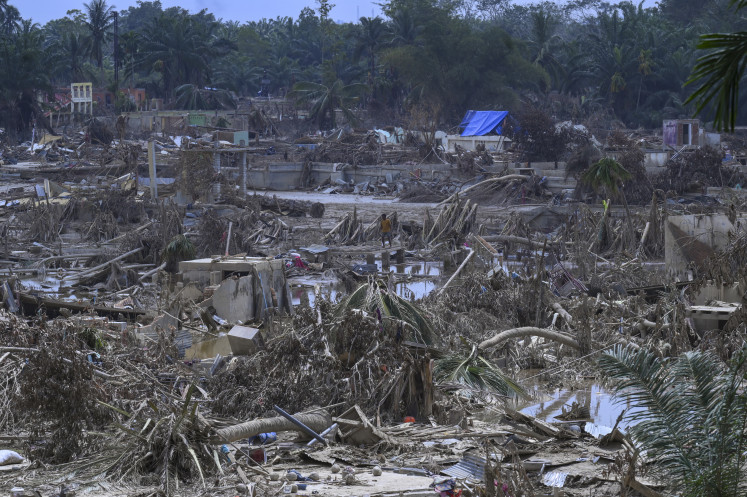Popular Reads
Top Results
Can't find what you're looking for?
View all search resultsPopular Reads
Top Results
Can't find what you're looking for?
View all search resultsEducation the key to history
Few people today are interested in the country's ancient history, says archaeologist Kristiawan, who teaches at Udayana University in Denpasar
Change text size
Gift Premium Articles
to Anyone
Few people today are interested in the country's ancient history, says archaeologist Kristiawan, who teaches at Udayana University in Denpasar.
"We have just 15 students studying archaeology and the number who apply goes down every year. That's why we have developed an outreach initiative. We go to villages and schools where we raise awareness about archaeology among the general public." This program has proved to be a good way of spreading information about Indonesia's prehistory.
The public's lack of respect for the past can be destructive; however, the nation's heritage laws and their criteria for what must be preserved plays an even greater role in shaping the future legacy.
The turtle-shaped sarcophagus found near Kremes, despite being 2000 years old and made during Indonesia's Bronze Age, is considered an also-ran in importance. Turtle-shaped sarcophagi are common, as ancient Balinese believe the turtle served as the vessel to the next life.
"Ten sarcophagi like this one have been discovered in the Kremes area," Kristiawan said. "Other sarcophagi found closer to the mountains are of greater importance because of their more elaborate decoration, technology and rarity."
Although any artifact from 2,000 years ago is pretty significant, Kristiawan said some were more significant than others. He pointed out that stone sarcophagi were carved by hand, and, for some still-undetermined reason, stopped being used in burials 2,000 years ago.
Chinese ceramics found at the site date from between the 10th and 16th centuries, with the bulk of ceramic fragments probably dating from before the 14th century when the two countries were regular trading parties. Trade between the two nations slowed after the 14th century because China closed her doors and destroyed all her shipyards and sailing vessels.
With the continuing destruction of these porcelain fragments and no archaeological research cataloging the finds at Kremes, we may never learn how strong the relationship was these two great ancient cultures.
The damage being done daily to the Kremes site can be compared to that which occurred at the Prambanan Temple in Central Java.
Over the centuries people removed stones from this ninth century Hindu temple, using them to build homes or roads. If that practice had not been stopped and the site protected, Prambanan would be the stuff of legend alone.
Kremes may not be in the same league as that great Hindu monument, but until it is safely excavated, no one will ever know for sure.
- Trisha Sertori










